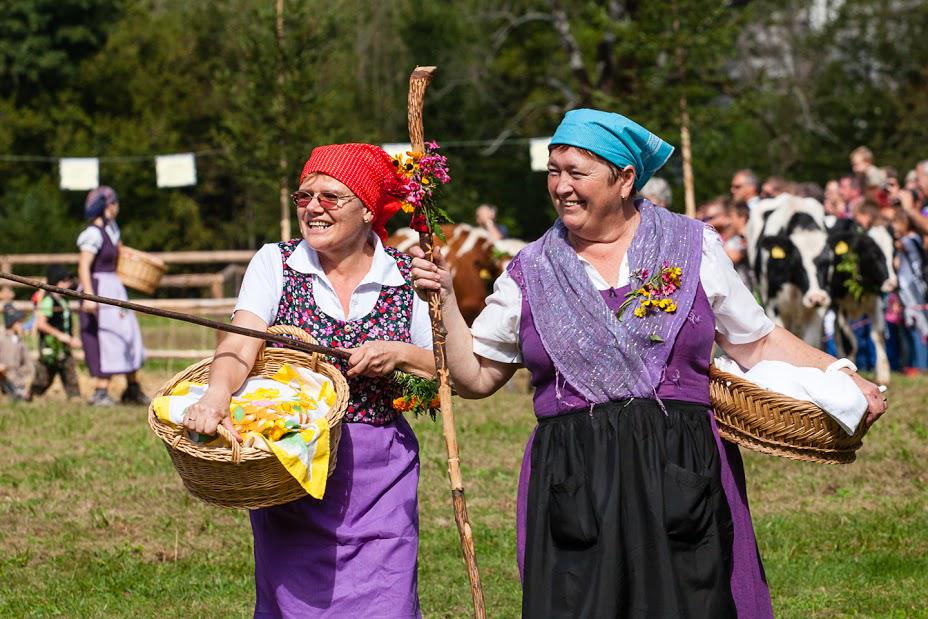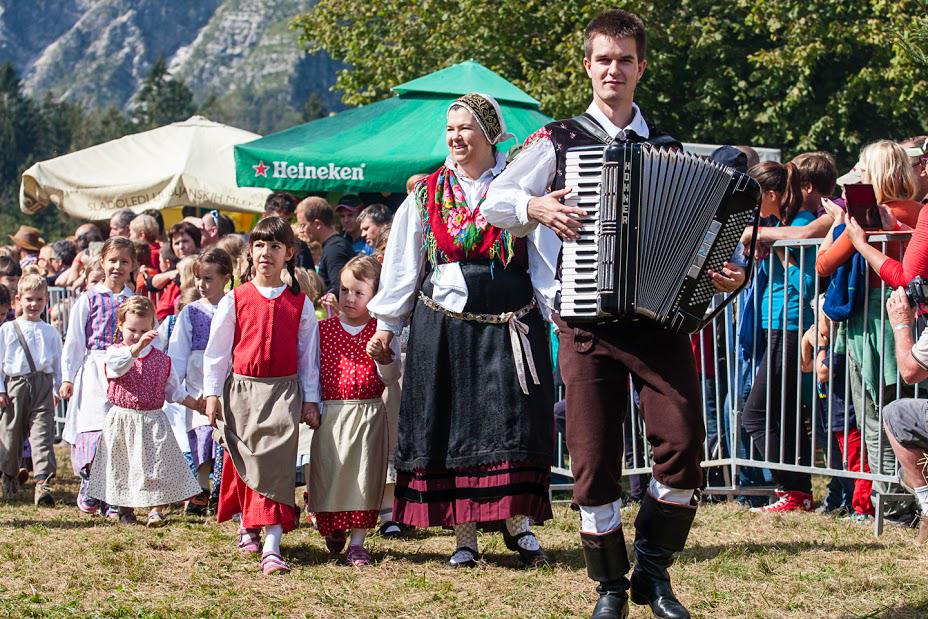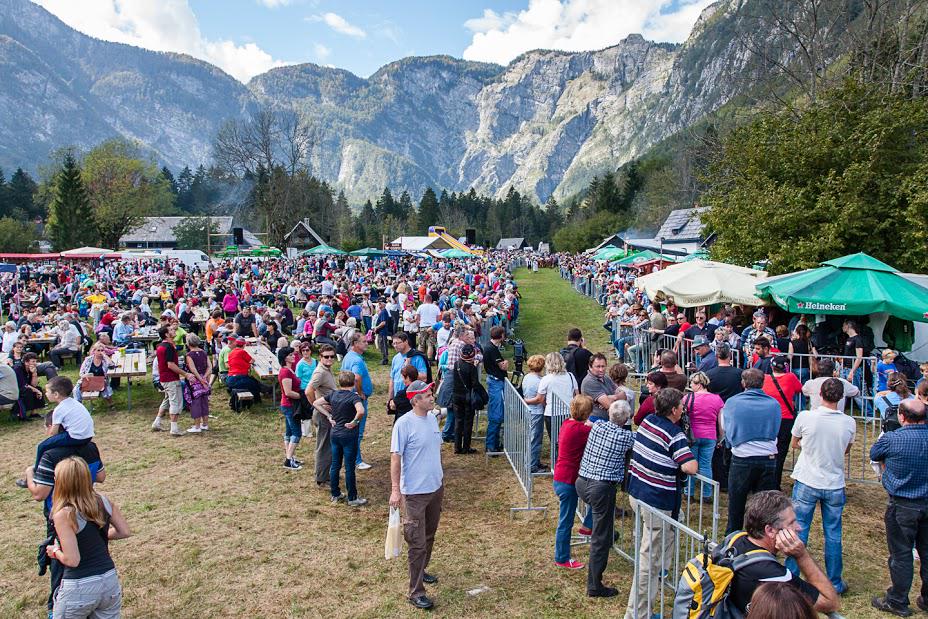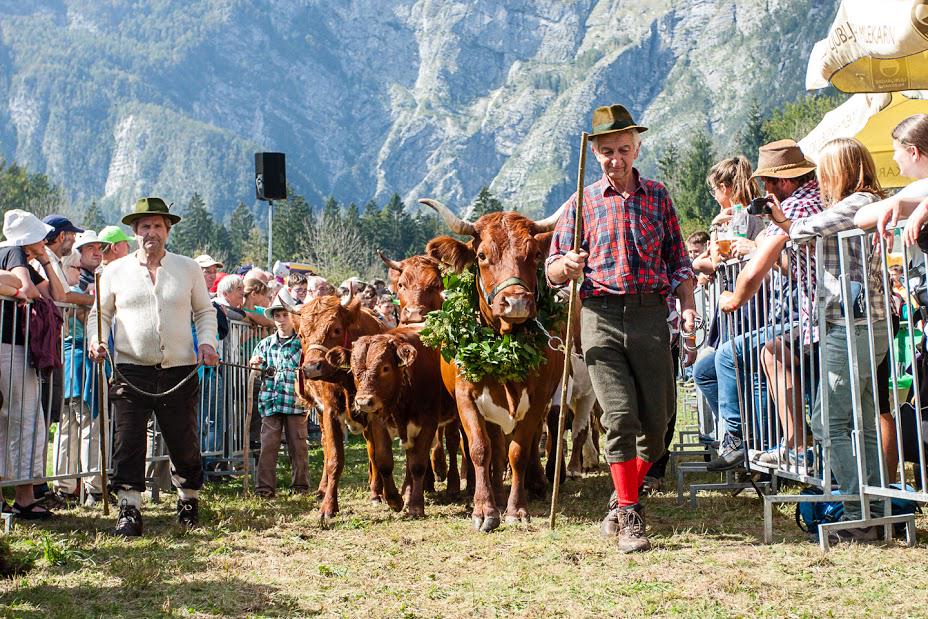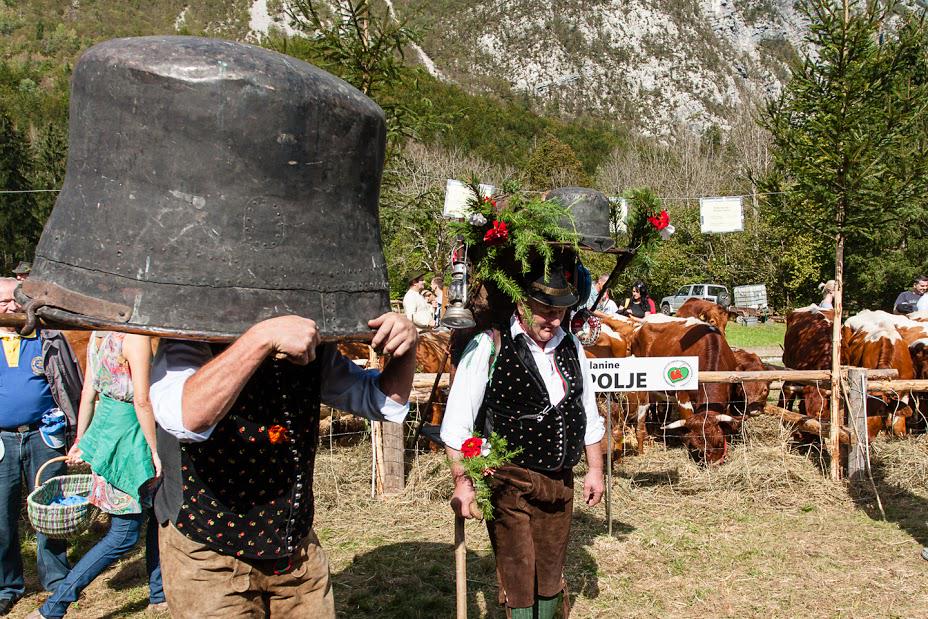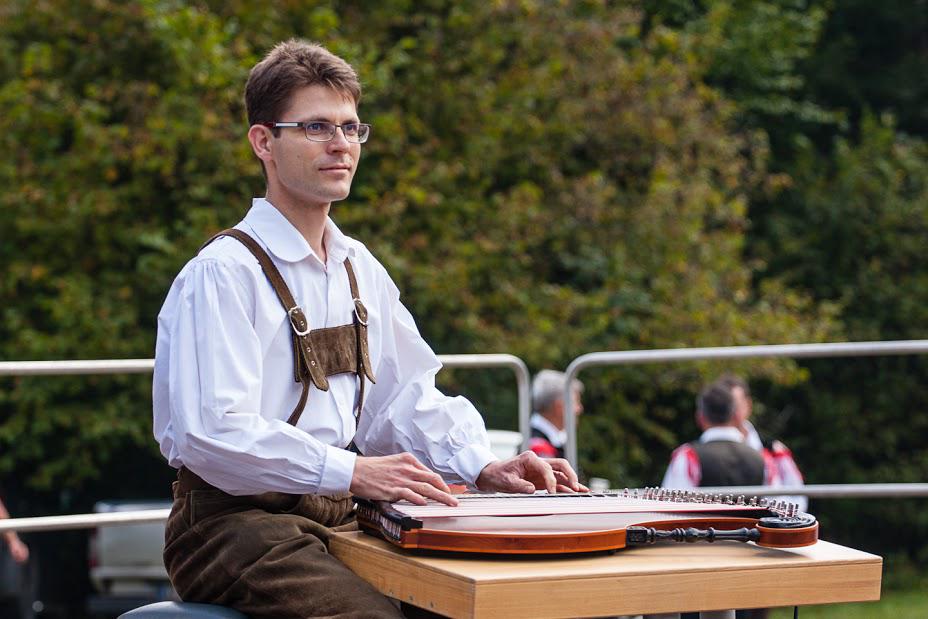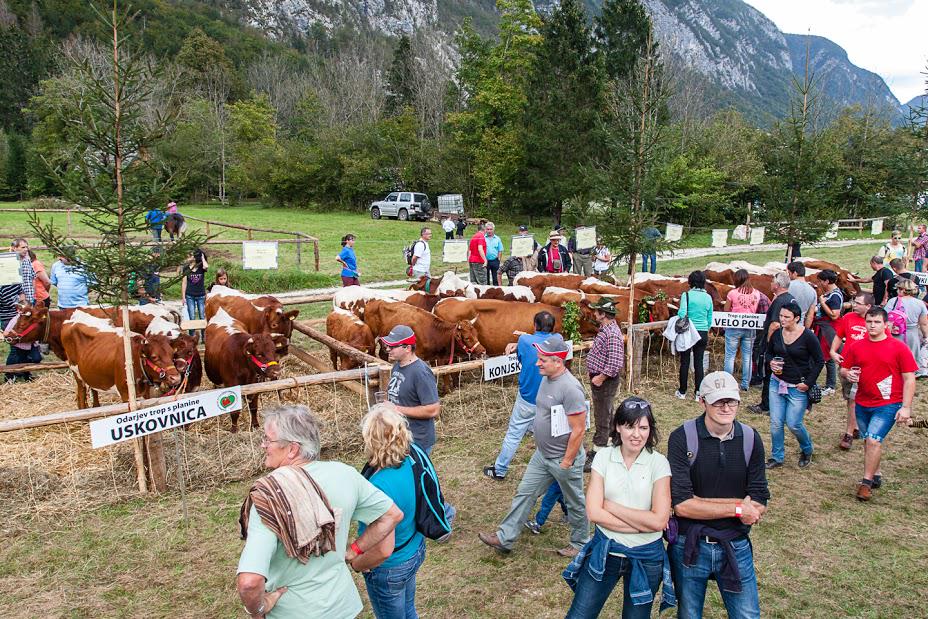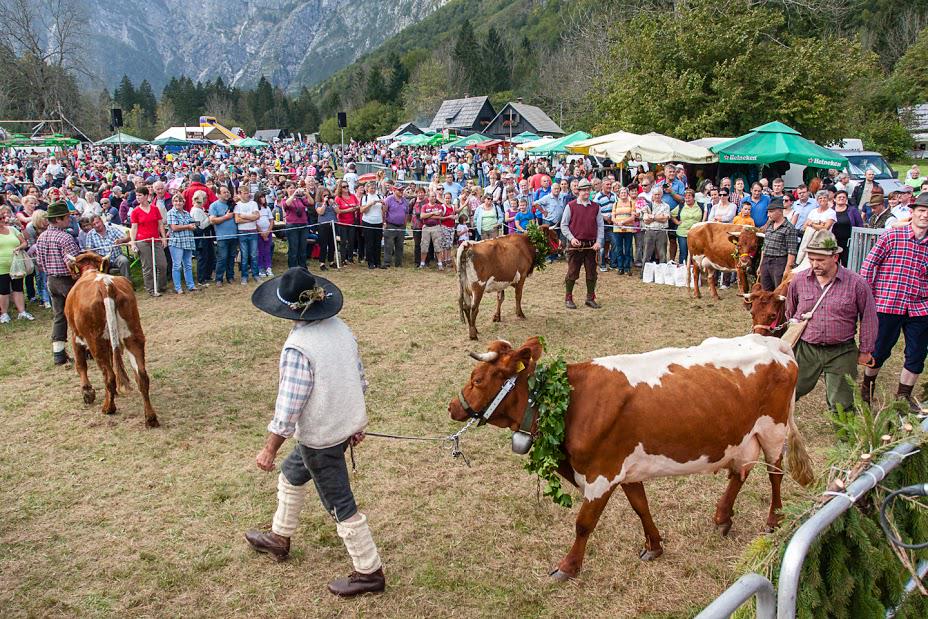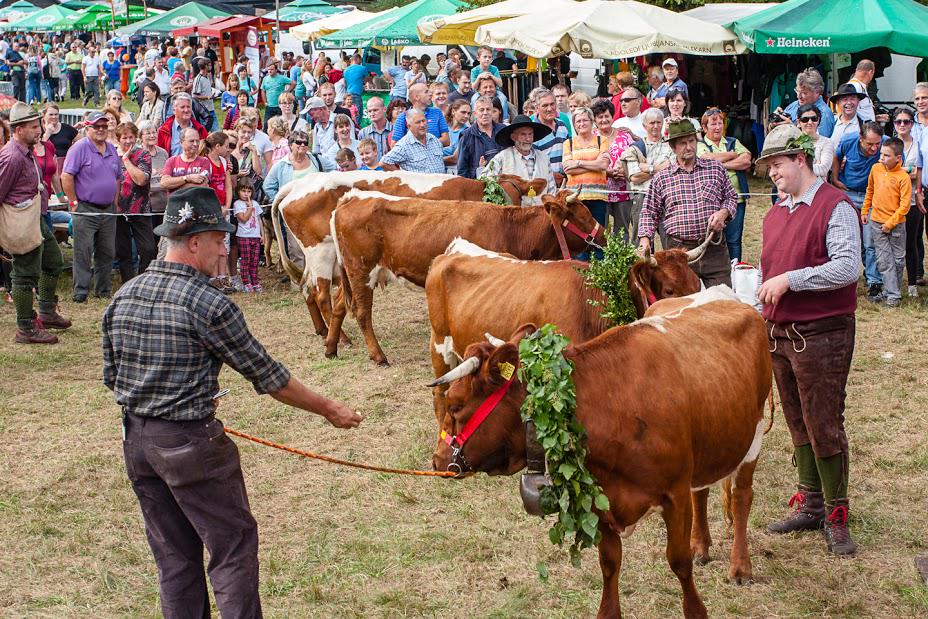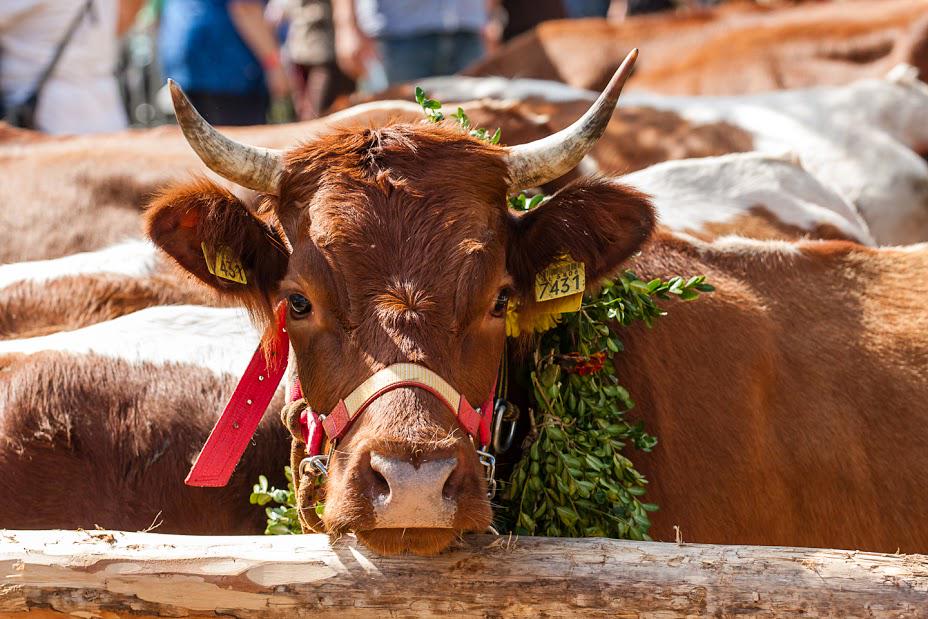
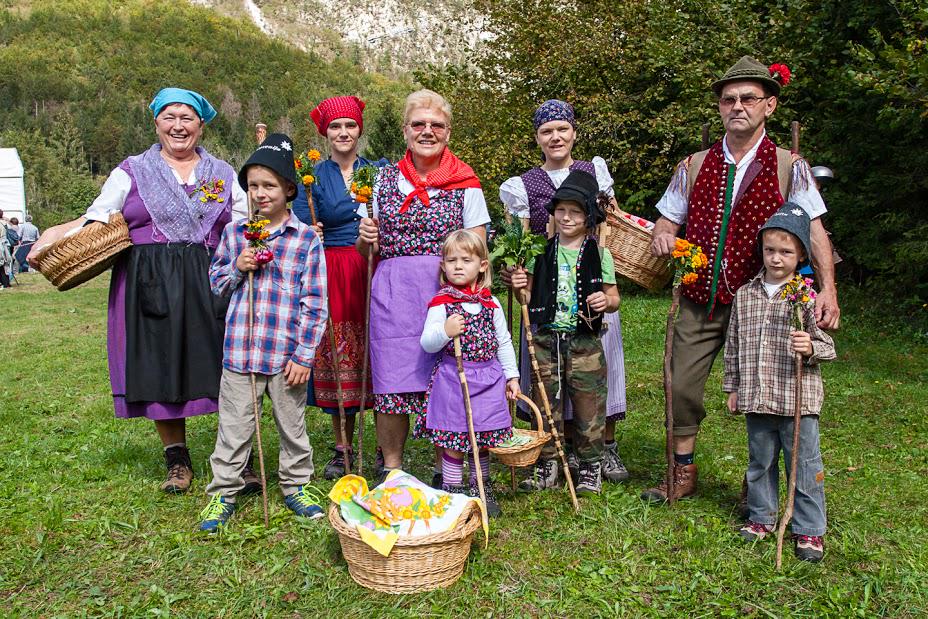
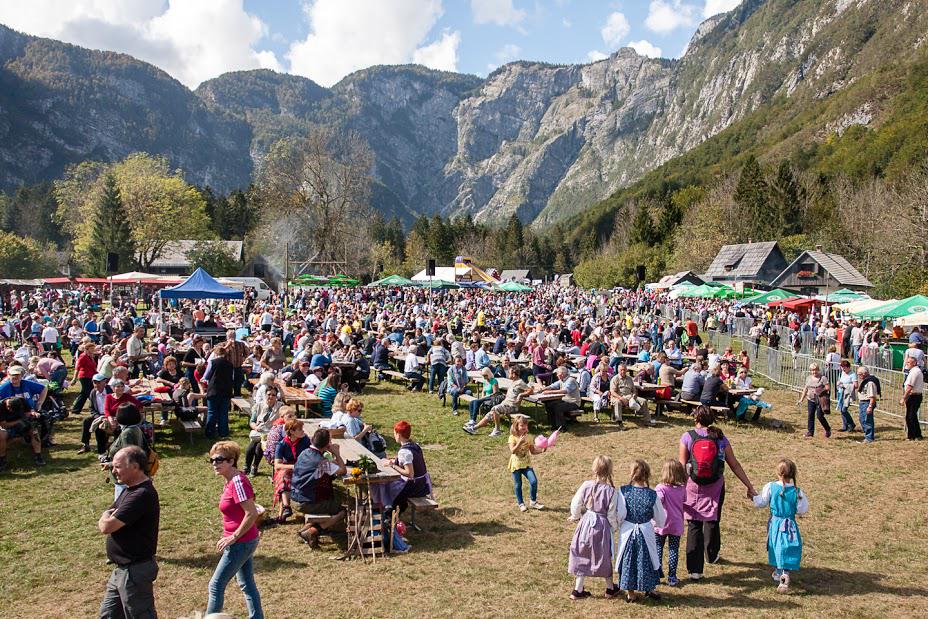
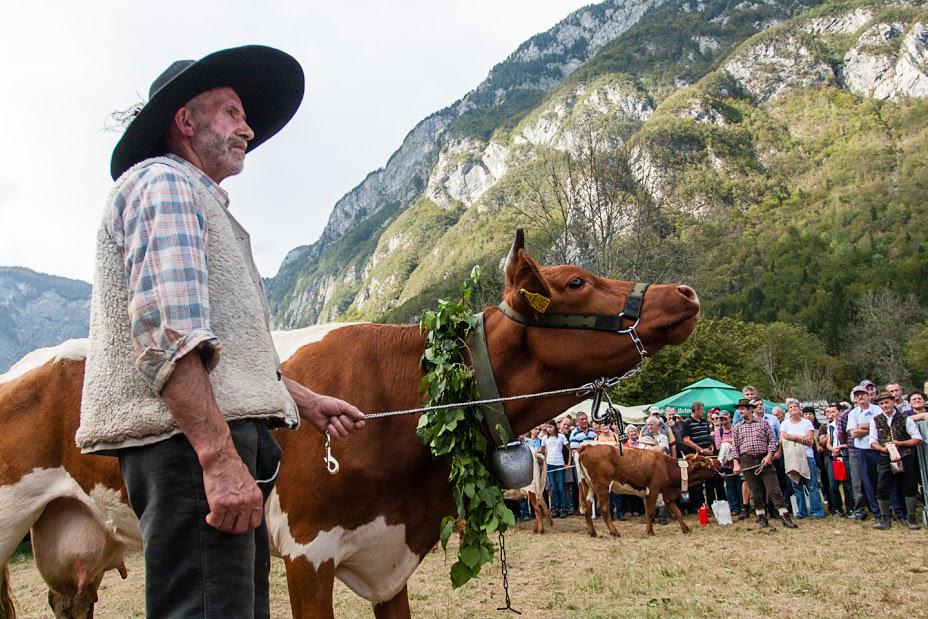
It was the climax of the 58th Cows' Ball, where they awarded the honorary cowbells to the five most beautiful representatives of the Bohinj indigenous Cika cattle breed. The organizers have counted almost 6500 visitors, 92 cows, and 10 breeders.
Promotion of the indigenous Cika cattle breed is, according to the organizer Jure Sodja, the representative of the Bohinj Tourist Association, among the main missions of the modern Caws’ Ball. "The Cows’ Ball has several purposes, which have been changing throughout the years. Basically it is about preserving tradition, honouring Alpine dairy farmers, ‘planšar’ in the Slovenian language, and the mountains, about support and tribute to making of cheese, and it serves also for prolonging tourist season," Sodja explained and added that in the last years an extensive fair has been introduced as well.
Cows’ Ball in the past and today
Until the fifties of the previous century the Cows’ Ball was mainly a holiday for the local people, and Alpine dairy farmers and caterers, marking the end of tourist and grazing season. Thus Alpine dairy farmers ('majer' in Slovenian) participated at the event. Adorned herds of cows were driven from the mountains by Alpine dairy farmers, who brought "basenga" on their sholders – i.e. everything needed for cheese making, and other necessities for living on the mountain. Sodja said that the event is becoming more and more tourist oriented. "We do our best to keep it authentic, but the reality shows that some things have not been authentic for some time now. We try to present the event as it should be, and our focus remains on presentation of the indigenous cattle breed."
Festive parade of cows, performers, and herds of Cika cattle
The first to honour the performance area under Pršivec at Ukanc was the cow Fejstka, accompanied by the Alpine dairy farmers, 'majers', and herds of mixed breed cattle. Next came the numerous performers (Kranj City Municipality Wind Orchestra, Bohinj Band, children Folklore Dance Group Bohinj, Folklore Dance Group KUD Triglav Srednja vas, Folklore Dance Group from Croatia). In the end of the parade cows of Cika breed from the mountains Uskovnica, Suha, Konjska Dolina, Velo Polje and Zajamniki came to the valley. The organizers told us that years ago 'Cika' cows were not very valued, as they are characteristically somewhat smaller and weaker, and don't give a lot of milk. "Yet the quality of their milk is superior. Their smaller stature does not make them inferior," asserted Rafko Rokavec, Professional Secretary for Cika cattle breed and coordinator of Agriculture and forestry institution Ljubljana, who also acted as a judge in Cika competition. From each of the five herds the most beautiful representative of the indigenous Bohinj cattle breed was chosen.
Holiday of Alpine herdsmen and cheese makers
An important role at Cows' Ball is reserved for herdsmen and cheese makers. They told us the things have changed, but they still remember how it used to be, and preserve the memories and tradition. The Gašperin family from Bohinj fit out in traditional clothes Alpine dairy farmers used to wear. Mother Jerica Gašperin told us it was their duty to prevent cows from falling into precipices, and to shelter them during storms so that they would not be exposed to thunderbolts: "I used to stay in the mountains from the middle of June till the middle of September, until the Cows' Ball. From the middle of June we stayed low in the mountains for three weeks, and then we moved, with all the necessary equipment, to higher mountains. 'Basenga' means migration of cows, and what we are looking at now is also 'basenga'. 'Basenga' includes also the equipment an Alpine dairy farmer carries when moving. We got up at five in the morning, and worked till dusk, till nine in the evening. We had to take care of 20 to 30 cows, and to process the milk we milked. We turned it into cottage cheese, cheese, butter, 'mohanc' or mohant cheese. Cow's ball was a festive and joyful closure of the working summer spent in the mountains. I still consider Cows' Ball the biggest holiday," Jerica concluded.
This year's novelty: Cheese holiday on Saturday
The novelty of the 58th traditional event was the Cheese holiday preceding Cows' Ball on Saturday. "Products by vintners, cheese makers from Bohinj, and inventive caterers offering all kinds of specialties with cheese and other dairy products as ingredients could be tasted. The visitors could also see a number of performances, and they enjoyed themselves late into the night," Jure Sodja said for MMC.
Cows, music, 'žganci', cheese
At Cows' Ball on Sunday the visitors could see both children and adult Folklore Dance Groups from Bohinj, Folklore Dance Group KUD Triglav Srednja vas, Folklore Dance Group from Croatia, Bohinj Band, Kranj City Municipality Wind Orchestra, zither player Dejan Praprotnik, Cawboy ritem dance group, and Fantje s Praprotna Band. Igor in Zlati zvoki Band provided entertainment all day long, while Kondi Pižorn was in charge of humour. Several thousands of visitors could taste 'žganci', sauerkraut, buckwheat ravioli (ajdovi krapi) and other traditional dishes. At the fair all kinds of things could be bought, from clothes and similar items to genuine Bohinj cheeses and other dairy products. People could hang around and admire the most beautiful Cika cows from Bohinj, and all the other cows – there were 92 of them altogether! They took care of the genuine atmosphere, adding their characteristic smell – and assured the prudence of visitors who had to watch their steps in order to avoid a smelly souvenir on their soles.
Mateja Leban, foto: Aleš Leban
Translated by G. K.





















































